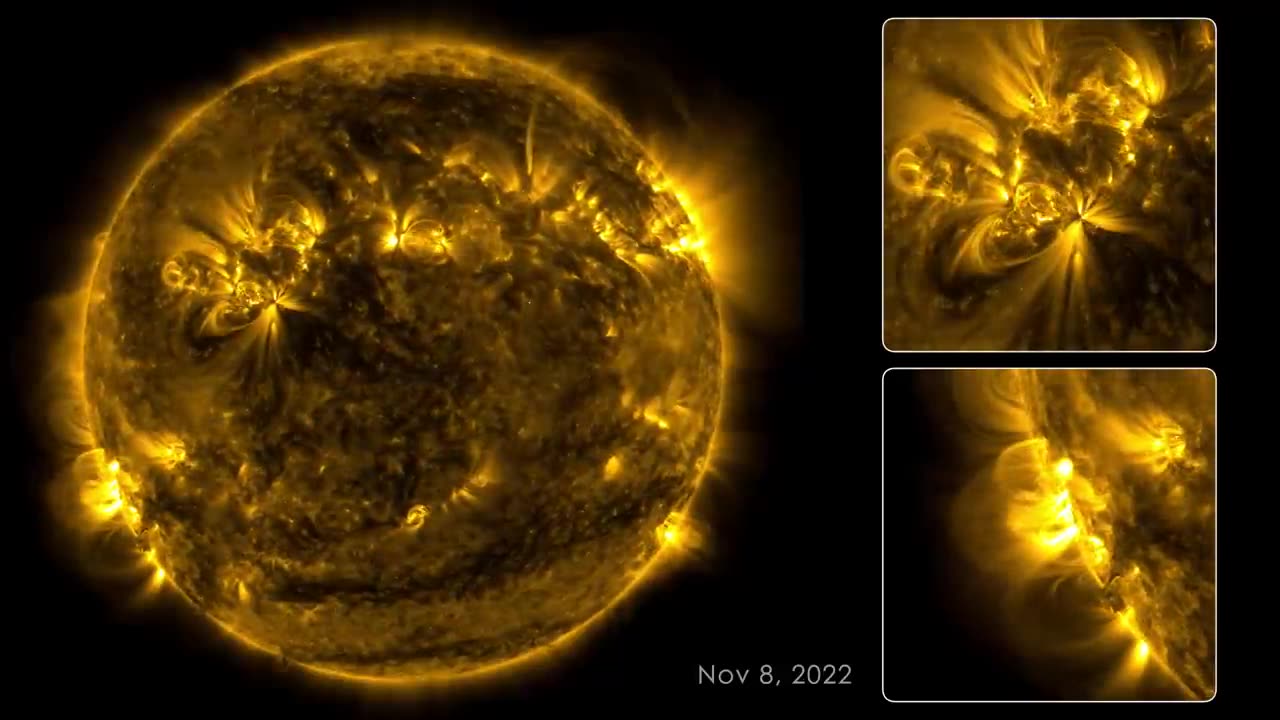Premium Only Content

133 Days on the Sun
as they pass between the spacecraft and the Sun. Other blackouts are caused by instrumentation being down or data errors. SDO transmits 1.4 terabytes of data to the ground every day. The images where the Sun is off-center were observed when SDO was calibrating its instruments. SDO and other NASA missions will continue to watch our Sun in the years to come, providing further insights about our place in space and information to keep our astronauts and assets safe. The music is a continuous mix from Lars Leonhard’s “Geometric Shapes” album, courtesy of the artist. Credit: NASA's Goddard Space Flight Center Scott Wiessinger (PAO): Lead Producer Tom Bridgman (SVS): Lead Visualizer Scott Wiessinger (PAO)ot be excised or remixed in other products. Specific details on such imagery may be found here. For more information on NASA’s media guidelines, visit. Video Description: On the left side of the frame is the full circle of the Sun. It appears in a golden yellow color, but splotchy and with thin yellow wisps extending from the surface. Some areas are very bright and others almost black. The whole Sun rotates steadily, with one full rotation taking 12 minutes in this time lapse. There are usually only a few bright regions visible at a time and they shift and flash like small fires. From these regions there are wispy loops reaching up above the surface that rapidly change shape and size. On the right side of the frame are two white-outlined squares with enlargements of interesting regions of the Sun.
-
 56:27
56:27
Sarah Westall
5 hours agoEnd of Aging, Hydrogen Bomb Research, Serial Killers & Violent Behavior, Bipolar Research w/Dr Walsh
23.5K2 -
 4:36:53
4:36:53
MattMorseTV
6 hours ago $0.46 earned🔴Sunday Gaming🔴
49.2K2 -
 2:31:16
2:31:16
Joker Effect
3 hours agoINTERVIEWING Rumble Gaming community members: Viewbotting and how they see the current landscape.
13.1K2 -
 1:45:53
1:45:53
Nerdrotic
6 hours ago $0.27 earnedUnravelling the Secrets of Skinwalker Ranch | Forbidden Frontier #115
71.8K4 -
 41:56
41:56
Athlete & Artist Show
7 hours ago $0.75 earnedAustin Ekeler: Going From "0 Star Recruit" To Leading The NFL In TD's, New Fan App | FROM THE VAULT
21.7K1 -
 2:46:49
2:46:49
Barry Cunningham
11 hours agoNOW THEY FEAR US! | RFKJR STRIKES BACK | JD VANCE ON PRESIDENT TRUMP | AND MORE NEWS!
67.2K49 -
 LIVE
LIVE
Spartan
6 hours agoCharlotte Qualifier watch party + Ranked and Expedition 33
104 watching -
 6:09:54
6:09:54
bigbossrobinson
10 hours agoLIVE - DOUBLE IMPACT - RESIDENT EVIL 4 & METAL GEAR SOLID Δ: SNAKE EATER
32K1 -
 14:37
14:37
Colion Noir
11 hours agoCanadian Police Chief Urges Citizens To Comply With Home Invaders And Hide
78.9K95 -
 3:10:59
3:10:59
OVERKLOC
7 hours ago🔴LIVE - CHILL SUNDAY GAMING - WHO KNOWS WHAT WE'LL PLAY
18.6K